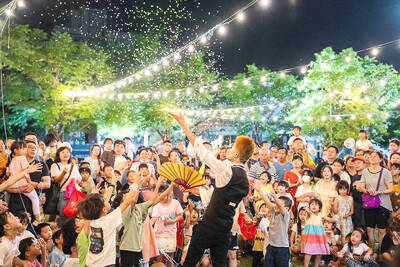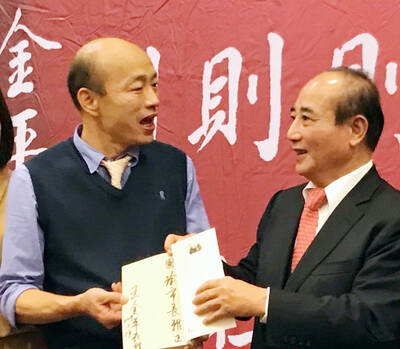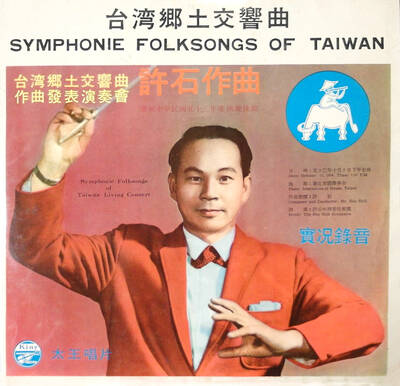If the luscious red orb that sails through Flight of the Red Balloon like an airborne cherry looks as if it flew in from another movie, in some ways it did. The film, the latest wonderment from the Taiwanese master Hou Hsiao-hsien (侯孝賢), takes as one of its inspirations Albert Lamorisse’s 1956 classic, The Red Balloon, about a young boy and the talismanic sphere that follows him through the gray streets of Paris like a dog, a lover, a ghost — as much a reminder of the precariousness of life as an emblem of innocence.
There is a young boy in this red balloon film too, Simon (Simon Iteanu), a moppet with sandy hair and serious eyes who lives with his mother, Suzanne (Juliette Binoche), in a tiny bourgeois-bohemian Parisian flat bursting with books and bric-a-brac. When the story opens, Simon is trying to coax the balloon into his grasp, his body straining upward as he clambers on the railing of a Metro stop at the Place de la Bastille, the site of the uprising that helped ignite the Revolution of 1789. Despite Simon’s pleading, the balloon floats away and sails past the quarter’s totemic July Column, a pillar that commemorates the Revolution of 1830 and is crowned with a golden winged male figure called the Spirit of Liberty.
The balloon will soon hover closer to the ground, as will the film, which centers on a handful of characters joined together in love and no small amount of confusion, much of it churned up by Suzanne. One of the most vibrantly alive and true characters in Binoche’s career, a resume inundated with melodramatic tears, Suzanne invades the film like a hurricane, a riot of colors, textures, patterns and words. She’s terminally distracted and buzzing with fury (at her estranged lover, at her neighbor), one of those bruised souls for whom every slight contains the threat of a larger drama. A professional puppeteer, she seems most at peace only when she’s giving grave, gravelly voice to one of her creations.

PHOTO COURTESY OF SPOT TAIPEI FILM HOUSE
The story takes off shortly after the balloon does, when Simon is tethered to another elusive wanderer, Song (Song Fang, 宋芳), a Chinese national hired to be his sitter.
A former film student, Song turns out to be making a video about red balloons, which suggests that Lamorisse’s 1956 movie is beloved not only by Western children. (At one point you see snippets of her video — Simon puts in a guest appearance — which makes it seem as if Song had been scouting locations for the very film you’re watching.) Like the puppet show Suzanne performs, about a character who tries to boil the ocean to retrieve his beloved, the video speaks to something about the interior life of the character, giving shape to feeling.
The puppet play and the video are in a sense shadows of Hou’s film, which itself has a diaphanous, hypnotically ethereal quality. Part of this is due to Hou’s approach to narrative, which replaces the rigid linearity of the three-act model with complex, impressionistic forms; isolated gestures; fugitive moments; saturated moods; and visual harmony.
Yet while his stories may feel loose, elliptical (earlier titles include his 1998 masterpiece, Flowers of Shanghai), he is extraordinarily rigorous. In Flight of the Red Balloon he makes particularly expressive use of glass, as when Simon stares out a window and his gaze is met by his own reflection, a doubling that echoes the scene before, when the red balloon pauses next to its painted twinned image floating on a mural.
Melancholy clings to Simon, Suzanne and Song as it does to many of Hou’s characters. Much like the red balloon, which bops into periodic view and hovers outside the apartment window like a prowler (or an angel), mother and child appear especially adrift. They’re both in the world and yet somehow apart, as if lost in a mutual dream.
This otherworldly sense is amplified by two flashbacks — one motivated by Simon, the other by Suzanne — involving the family’s other child, Louise (Louise Margolin), a teenager who lives in Brussels, where she cares for her maternal grandfather, a puppeteer like Suzanne. Seen only in flashback and in images from childhood, Louise is the resident ghost, a reminder of the time when the family was together.
That may sound heavy, yet there’s a lightness of touch here that keeps the worst at bay. Hou’s films can be crushingly sad; as with Bresson and Ozu, his restraint only deepens the emotional power of his work. But whether because of that red balloon — which alternately invokes the spirit of liberty and its elusiveness — or because he was practicing his art in one of the world’s most beautiful cities, Hou has made a film that is, to borrow a line from one of his characters, “a bit happy and a bit sad.” These words are spoken by a student who, with Simon and a cluster of others, is in the Musee d’Orsay with a teacher discussing Felix Vallotton’s 1899 painting of a child chasing a red ball, Le Ballon.
Vallotton was associated with a group of Post-Impressionist artists, including Maurice Denis, who took their inspiration from Gauguin and called themselves the Nabis. The Nabis created vividly colored, abstracted images of everyday life that I think Hou must find appealing.
Embracing his status as a prophet of the modern, Denis wrote: “Remember that a painting — before being a war horse, a nude woman or some anecdote or other — is essentially a flat surface covered with colors arranged in a certain order.” This seems worth mentioning because while it’s easy enough to speak of Hou’s themes — the dissolution of the family, among others — this film is also a flat surface of a different type covered with colors arranged in a certain order. (Plus light!)
In the end what elevates Hou’s films to the sublime — and this one comes close at times — are not the stories but their telling. In Flight of the Red Balloon Hou plays with light and space on the small canvas that is Simon and Suzanne’s apartment, moving the camera around as gracefully as if it were a brush (or a balloon).
In one magnificent scene the camera floats from one character to the next for roughly eight minutes without a single cut, tracing invisible lines between Simon, Suzanne, Song, an intrusive neighbor and a piano tuner who is working on the family’s old upright. Out of this chaos — Simon playing, Suzanne yelling, the piano tuner tuning, and Song simply moving among them — Hou creates the world.

The depressing numbers continue to pile up, like casualty lists after a lost battle. This week, after the government announced the 19th straight month of population decline, the Ministry of the Interior said that Taiwan is expected to lose 6.67 million workers in two waves of retirement over the next 15 years. According to the Ministry of Labor (MOL), Taiwan has a workforce of 11.6 million (as of July). The over-15 population was 20.244 million last year. EARLY RETIREMENT Early retirement is going to make these waves a tsunami. According to the Directorate General of Budget Accounting and Statistics (DGBAS), the

Last week the Chinese Nationalist Party (KMT) announced that the legislature would again amend the Act Governing the Allocation of Government Revenues and Expenditures (財政收支劃分法) to separate fiscal allocations for the three outlying counties of Penghu, Kinmen and Matsu from the 19 municipalities on Taiwan proper. The revisions to the act to redistribute the national tax revenues were passed in December last year. Prior to the new law, the central government received 75 percent of tax revenues, while the local governments took 25 percent. The revisions gave the central government 60 percent, and boosted the local government share to 40 percent,

Many will be surprised to discover that the electoral voting numbers in recent elections do not entirely line up with what the actual voting results show. Swing voters decide elections, but in recent elections, the results offer a different and surprisingly consistent message. And there is one overarching theme: a very democratic preference for balance. SOME CAVEATS Putting a number on the number of swing voters is surprisingly slippery. Because swing voters favor different parties depending on the type of election, it is hard to separate die-hard voters leaning towards one party or the other. Complicating matters is that some voters are

Sept 22 to Sept 28 Hsu Hsih (許石) never forgot the international student gathering he attended in Japan, where participants were asked to sing a folk song from their homeland. When it came to the Taiwanese students, they looked at each other, unable to recall a single tune. Taiwan doesn’t have folk songs, they said. Their classmates were incredulous: “How can that be? How can a place have no folk songs?” The experience deeply embarrassed Hsu, who was studying music. After returning to Taiwan in 1946, he set out to collect the island’s forgotten tunes, from Hoklo (Taiwanese) epics to operatic